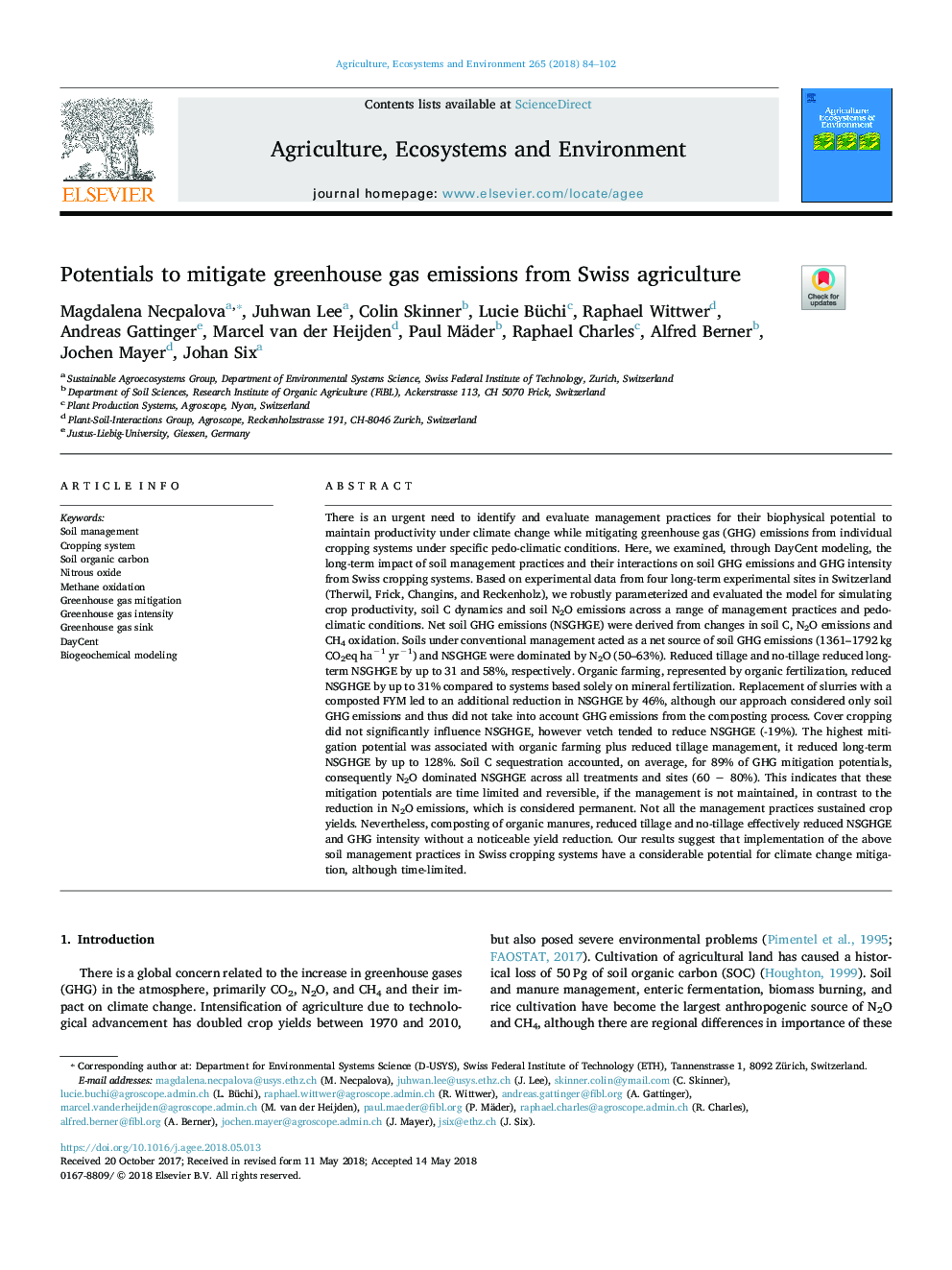| Article ID | Journal | Published Year | Pages | File Type |
|---|---|---|---|---|
| 8486965 | Agriculture, Ecosystems & Environment | 2018 | 19 Pages |
Abstract
There is an urgent need to identify and evaluate management practices for their biophysical potential to maintain productivity under climate change while mitigating greenhouse gas (GHG) emissions from individual cropping systems under specific pedo-climatic conditions. Here, we examined, through DayCent modeling, the long-term impact of soil management practices and their interactions on soil GHG emissions and GHG intensity from Swiss cropping systems. Based on experimental data from four long-term experimental sites in Switzerland (Therwil, Frick, Changins, and Reckenholz), we robustly parameterized and evaluated the model for simulating crop productivity, soil C dynamics and soil N2O emissions across a range of management practices and pedo-climatic conditions. Net soil GHG emissions (NSGHGE) were derived from changes in soil C, N2O emissions and CH4 oxidation. Soils under conventional management acted as a net source of soil GHG emissions (1361-1792â¯kg CO2eq haâ1 yrâ1) and NSGHGE were dominated by N2O (50-63%). Reduced tillage and no-tillage reduced long-term NSGHGE by up to 31 and 58%, respectively. Organic farming, represented by organic fertilization, reduced NSGHGE by up to 31% compared to systems based solely on mineral fertilization. Replacement of slurries with a composted FYM led to an additional reduction in NSGHGE by 46%, although our approach considered only soil GHG emissions and thus did not take into account GHG emissions from the composting process. Cover cropping did not significantly influence NSGHGE, however vetch tended to reduce NSGHGE (-19%). The highest mitigation potential was associated with organic farming plus reduced tillage management, it reduced long-term NSGHGE by up to 128%. Soil C sequestration accounted, on average, for 89% of GHG mitigation potentials, consequently N2O dominated NSGHGE across all treatments and sites (60 â 80%). This indicates that these mitigation potentials are time limited and reversible, if the management is not maintained, in contrast to the reduction in N2O emissions, which is considered permanent. Not all the management practices sustained crop yields. Nevertheless, composting of organic manures, reduced tillage and no-tillage effectively reduced NSGHGE and GHG intensity without a noticeable yield reduction. Our results suggest that implementation of the above soil management practices in Swiss cropping systems have a considerable potential for climate change mitigation, although time-limited.
Keywords
Related Topics
Life Sciences
Agricultural and Biological Sciences
Agronomy and Crop Science
Authors
Magdalena Necpalova, Juhwan Lee, Colin Skinner, Lucie Büchi, Raphael Wittwer, Andreas Gattinger, Marcel van der Heijden, Paul Mäder, Raphael Charles, Alfred Berner, Jochen Mayer, Johan Six,
